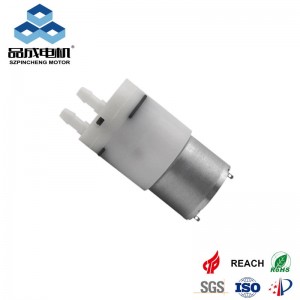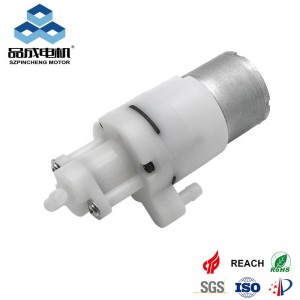In the world of modern engineering, brushless DC motor mini water pumps have gained significant popularity due to their efficiency, reliability, and versatility. These compact pumps are used in a wide range of applications, from cooling systems in electronics to water circulation in small - scale industrial processes. Understanding how they work can provide valuable insights into their performance and potential uses.
Components of a Brushless DC Mini Water Pump
- Brushless DC Motor: This is the heart of the pump. Unlike traditional brushed motors, brushless DC motors do not have carbon brushes. Instead, they use electronic commutation. The motor consists of a stator, which is the stationary part, and a rotor, which is the rotating part. The stator is made up of coils wound around a core. When an electric current is passed through these coils, a magnetic field is generated. The rotor, on the other hand, contains permanent magnets.
- Impeller: The impeller is attached to the shaft of the motor's rotor. It is a crucial component that directly interacts with the water. The impeller typically has curved blades. When the motor rotates the impeller, it imparts energy to the water.
- Pump Housing: The pump housing encloses the impeller and provides a path for the water to flow in and out. It is designed to direct the water's movement and ensure efficient operation. The inlet of the pump housing allows water to enter, while the outlet is where the pressurized water is discharged.
- Drive Circuit: A drive circuit is an essential part of the brushless DC mini water pump system. It controls the operation of the brushless DC motor. The drive circuit receives electrical power and converts it into the appropriate signals to drive the motor. It also manages the speed and direction of the motor.
Working Principle
- Motor Operation: When electrical power is supplied to the drive circuit, it sends pulses of current to the coils in the stator of the brushless DC motor. These pulses create a rotating magnetic field in the stator. The permanent magnets in the rotor interact with this rotating magnetic field. According to the laws of electromagnetism, the magnetic field of the stator exerts a force on the magnetic field of the rotor, causing the rotor to rotate. This rotation is smooth and efficient because there is no physical contact (such as brushes and commutators) to cause friction or sparking, as in brushed motors.
- Impeller Action: As the motor's rotor rotates, the attached impeller also starts to spin at high speed. The curved blades of the impeller push the water that is in contact with them. As the impeller rotates, the water is forced to move along the blades. Due to the centrifugal force generated by the high - speed rotation of the impeller, the water is thrown outwards from the center of the impeller towards the outer edge.
- Water Flow in the Pump Housing: As the water is thrown outwards by the impeller, a low - pressure area is created at the center of the impeller. This low - pressure area causes more water to be drawn in through the inlet of the pump housing. The water that is thrown outwards by the impeller then flows through the pump housing and is directed towards the outlet. The design of the pump housing helps to convert the kinetic energy of the water (due to the impeller's rotation) into pressure energy, so that the water can be discharged at a sufficient pressure to meet the requirements of the application.
- Speed Control: The drive circuit plays a crucial role in controlling the speed of the pump. By adjusting the frequency and amplitude of the electrical pulses sent to the motor, the drive circuit can increase or decrease the speed of the motor. This, in turn, affects the speed of the impeller and the flow rate and pressure of the water being pumped. For example, in applications where a variable flow rate is required, such as in some cooling systems, the drive circuit can be adjusted to change the pump's speed accordingly.
Advantages of Brushless DC Mini Water Pumps
- High Efficiency: Since there is no brush - related friction in brushless DC motors, less energy is wasted in the form of heat. This results in higher overall efficiency compared to brushed motor - driven pumps.
- Long Lifespan: The absence of brushes means there is no wear and tear due to brush contact. This significantly increases the lifespan of the pump, reducing the need for frequent replacements.
- Low Noise and Vibration: Without the mechanical noise and vibration caused by brushes, brushless DC mini water pumps operate more quietly. This makes them ideal for applications where noise is a concern, such as in home appliances or medical equipment.
- Precise Speed Control: The ability of the drive circuit to precisely control the speed of the motor allows for accurate adjustment of the water flow rate and pressure, making these pumps suitable for a wide variety of applications with different requirements.
In conclusion, brushless DC motor mini water pumps work through the coordinated operation of their components, with the brushless DC motor providing the power, the impeller imparting energy to the water, and the pump housing directing the water flow. Their numerous advantages make them a popular choice in many industries where efficient and reliable water pumping is required.
you like also all
Post time: Sep-09-2025




